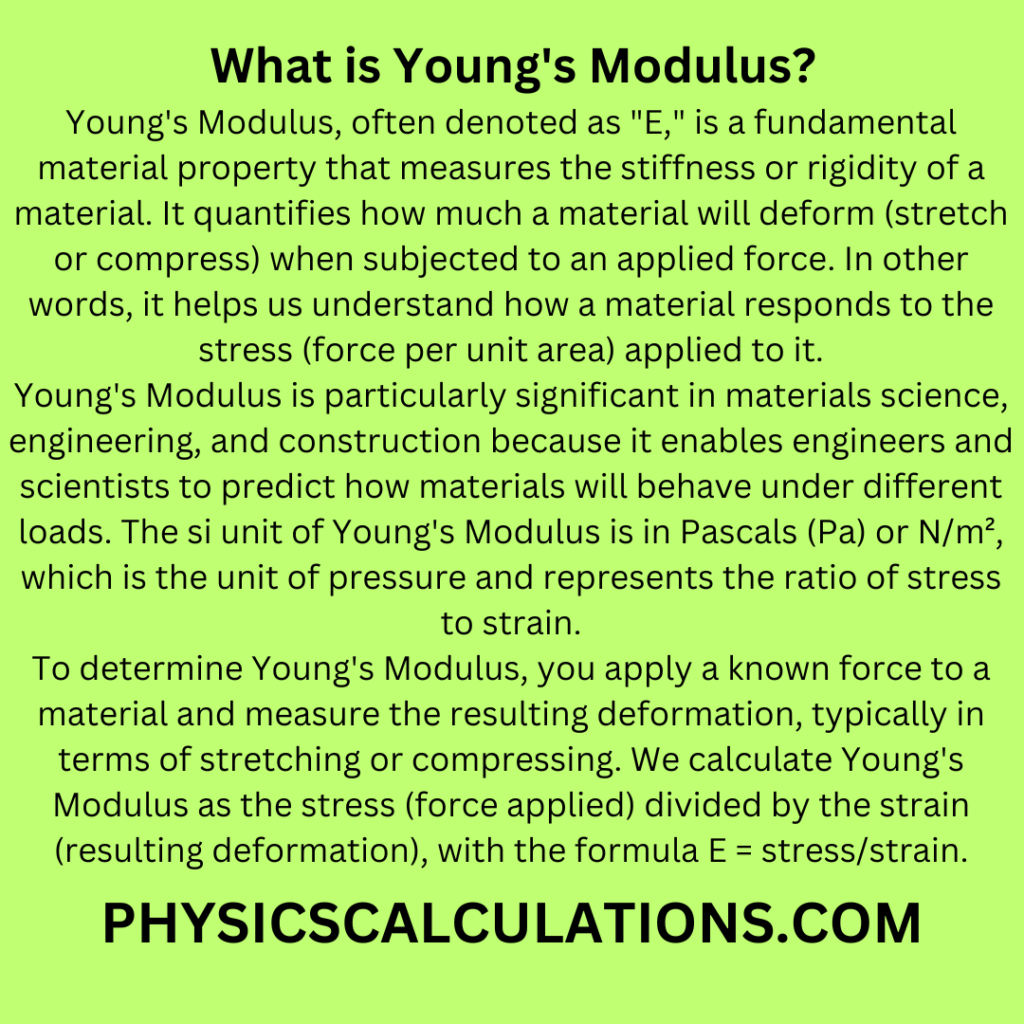What is Young’s Modulus?
Young’s Modulus, often denoted as “E,” is a fundamental material property that measures the stiffness or rigidity of a material. It quantifies how much a material will deform (stretch or compress) when subjected to an applied force. In other words, it helps us understand how a material responds to the stress (force per unit area) applied to it.
It is particularly significant in materials science, engineering, and construction because it enables engineers and scientists to predict how materials will behave under different loads. The si unit of Young’s Modulus is in Pascals (Pa) or N/m², which is the unit of pressure and represents the ratio of stress to strain.

To determine Young’s Modulus (E), you apply a known force to a material and measure the resulting deformation, typically in terms of stretching or compressing. We calculate Young’s Modulus as the stress (force applied) divided by the strain (resulting deformation), with the formula E = stress/strain.
Therefore, the Young’s Modulus (E) formula is:
E = stress/strain
Materials with a high Young’s Modulus, like steel or diamond, are stiff and resistant to deformation, meaning they can withstand significant loads without stretching or compressing much. In contrast, materials with a low E, like rubber or foam, are flexible and can deform considerably when subjected to force.
This topic is very important for designing structures, from buildings and bridges to aerospace components, ensuring they can support loads and withstand various stresses while maintaining their integrity. It also plays a key role in material selection, helping engineers choose the right materials for specific applications based on their mechanical properties and the expected stress they will experience.
You may also like to read:
How to Calculate Young Modulus
The acceleration of free fall is about 10 m/s2. why does the seconds unit appear twice?